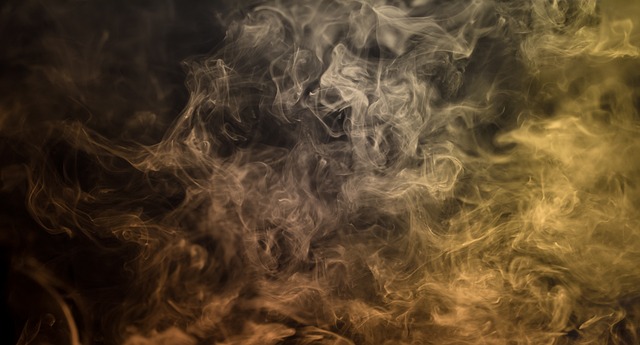How Long to Wait to Vape After Tooth Extraction? Know the Facts
Are you a vaping enthusiast who recently underwent a tooth extraction? If so, you’re probably wondering how long you need to wait before indulging in your favorite activity again. While it’s understandable to be eager to return to your vaping routine, it’s crucial to prioritize your oral health during the healing process. In this article, we will provide you with the facts you need to know about how long to wait to vape after a tooth extraction. With a confident and knowledgeable approach, we aim to help you make an informed decision regarding your post-extraction vaping timeline. So, let’s dive in and get the answers you’ve been seeking!
1. Understanding the Importance of Healing: The Relationship Between Vaping and Tooth Extraction
When it comes to healing after a tooth extraction, understanding the importance of maintaining good oral health is crucial. Many factors can affect the healing process, and one of them is vaping. Vaping has gained popularity in recent years, but its impact on oral health is still not fully understood. However, studies have shown that there is a relationship between vaping and delayed healing after tooth extraction.
One of the main reasons why vaping can hinder the healing process is the presence of nicotine in e-cigarettes. Nicotine is a vasoconstrictor, meaning it narrows blood vessels and reduces blood flow to the extraction site. This decreased blood flow can prevent essential nutrients and oxygen from reaching the area, slowing down the healing process. Additionally, vaping can also cause dry mouth, which can further impede healing as saliva plays a crucial role in maintaining oral health.
- Impact of nicotine: Nicotine present in e-cigarettes narrows blood vessels, reducing blood flow to the extraction site and delaying healing.
- Dry mouth: Vaping can cause dry mouth, which hampers the healing process as saliva helps keep the mouth clean and moisturized.
- Chemicals in e-liquids: E-liquids used in vaping contain various chemicals that can irritate the extraction site and impede healing.
While more research is needed to fully understand the relationship between vaping and tooth extraction healing, it is advisable to avoid vaping during the healing period to promote optimal recovery. Maintaining good oral hygiene practices, such as regular brushing and flossing, and following post-extraction care instructions provided by your dentist, are essential for a successful healing process.

2. The Science Behind Healing: Factors to Consider Before Vaping After Tooth Extraction
When considering vaping after a tooth extraction, it is important to understand the science behind the healing process. There are several factors to consider in order to ensure a smooth recovery and minimize any potential complications.
1. Nicotine: One of the main concerns with vaping after a tooth extraction is the nicotine content in e-cigarettes. Nicotine can constrict blood vessels, which can impair the healing process by reducing blood flow to the extraction site. It is advisable to avoid nicotine for at least 48 hours after the extraction to promote optimal healing.
2. Heat and Irritation: Vaping involves inhaling heated vapor, which can potentially cause irritation and dry out the extraction site. Dryness can delay the formation of a protective blood clot, leading to a condition known as dry socket. It is crucial to keep the extraction site moist and avoid excessive heat during the initial stages of healing to prevent complications.
3. Post-Extraction Recovery Timeline: How Long Should You Wait to Vape?
After a tooth extraction, it’s important to give your mouth enough time to heal properly before resuming certain activities, like vaping. The recovery timeline can vary depending on the complexity of the extraction and individual healing abilities, but here’s a general guideline to help you understand how long you should wait:
1. Immediate Post-Extraction Period (24-48 hours):
- During this time, it’s crucial to avoid vaping as it can disrupt the blood clot formation, leading to a painful condition called dry socket.
- Focus on resting and allowing your body to recover. Follow your dentist’s instructions for pain management and maintaining oral hygiene.
2. First Week:
- Continue to abstain from vaping to prevent complications.
- Watch for any signs of infection, such as persistent pain, swelling, or discharge, and promptly contact your dentist if you notice any of these symptoms.
Remember, every individual heals differently, so it’s crucial to consult with your dentist regarding your specific case and follow their recommendations for the best outcome. By prioritizing your oral health and following the recovery timeline, you can ensure a smooth healing process after tooth extraction.

4. Influencing Factors: Why the Healing Process Differs for Everyone
The healing process is a complex and intricate journey that varies from person to person. Several factors can influence this process, making it unique for each individual. Understanding these influencing factors can help us comprehend why some individuals heal faster or slower than others.
1. Nature of the injury: The type and severity of the injury play a significant role in determining the healing process. A minor cut or bruise may heal quickly, while a deep wound or fracture may require more time and medical intervention.
2. Overall health and immune system: A person’s overall health and immune system strength can greatly impact their healing process. Those with a robust immune system and good overall health tend to heal faster, as their bodies are better equipped to fight off infections and promote tissue regeneration.
3. Age: Age is another factor that influences healing. Generally, younger individuals have a more efficient healing process due to their higher metabolic rate and increased cell turnover. In contrast, older individuals may experience slower healing because of a decline in cell regeneration and reduced immune system function.
4. Lifestyle and habits: Lifestyle choices and habits, such as smoking, poor nutrition, excessive alcohol consumption, or lack of exercise, can significantly impact the healing process. These factors can weaken the immune system, impair blood flow, and delay tissue repair.
5. Psychological factors: The mind-body connection is essential in the healing process. Psychological factors like stress, anxiety, and depression can negatively affect the healing process by impairing immune function and delaying wound healing.

5. Expert Recommendations: What Dental Professionals Suggest for Vaping After Tooth Extraction
After undergoing a tooth extraction, it’s important to take proper care of your oral health to ensure a smooth recovery. Many patients wonder if vaping is safe following this procedure. We reached out to dental professionals for their expert recommendations on vaping after tooth extraction.
1. Give yourself time to heal: Dental professionals unanimously agree that it is best to avoid vaping for the first few days after a tooth extraction. During this time, the extraction site needs to form a blood clot, which helps in the healing process. The suction created by vaping can dislodge the blood clot, leading to a painful condition called dry socket. It is crucial to allow your mouth enough time to heal before resuming vaping.
2. Be mindful of the temperature: When you do resume vaping, it is essential to be cautious of the temperature of the vapor. High temperatures can irritate the extraction site and delay the healing process. Dental professionals recommend using lower temperature settings or opting for e-liquids with less nicotine to minimize potential discomfort. Additionally, avoid drawing the vapor directly over the extraction site to prevent any further irritation or complications.

6. Potential Risks: The Consequences of Ignoring the Healing Period
Ignoring the healing period after an injury or surgery can have serious consequences on your overall health and recovery. It is crucial to understand the potential risks involved and take the necessary precautions to ensure a smooth healing process.
1. Delayed Healing: One of the main risks of ignoring the healing period is delayed healing. Your body needs time to repair and regenerate damaged tissues, and by not allowing it the necessary rest, you may prolong the healing process. This can result in increased pain, inflammation, and the potential for complications such as infections or poor wound healing.
2. Increased Risk of Re-injury: Failing to give your body enough time to heal can significantly increase the risk of re-injury. Rushing back into physical activities before fully recovering can strain the injured area, making it more vulnerable to further damage. This can lead to a recurring injury or even permanent damage, requiring more extensive treatments or surgeries in the future.
7. Returning to Normal: When Can You Safely Resume Vaping After Tooth Extraction?
After undergoing a tooth extraction, it is important to take certain precautions to ensure proper healing and minimize the risk of complications. One common question that arises is when it is safe to resume vaping. While every individual’s healing process may vary, there are general guidelines that can help determine when it is appropriate to start vaping again.
1. Allow for initial healing: In the first 24 to 48 hours after a tooth extraction, it is crucial to let the extraction site begin the healing process undisturbed. During this time, it is best to avoid vaping to prevent any negative effects on the clot formation and to reduce the risk of infection.
2. Gradually reintroduce vaping: Once the initial healing period has passed, usually after a few days, you can consider gradually reintroducing vaping. However, it is important to proceed with caution and listen to your body. Start with short vaping sessions and pay attention to any discomfort or irritation around the extraction site. If you experience any pain, swelling, or bleeding, it is advisable to stop vaping and consult with your dentist.
Frequently Asked Questions
Q: How long should I wait to vape after a tooth extraction?
A: It is recommended to wait at least 72 hours before vaping after a tooth extraction to allow for proper healing.
Q: Why is it important to wait before vaping after a tooth extraction?
A: Waiting to vape after a tooth extraction is crucial to prevent complications and ensure proper healing. Vaping too soon can disrupt blood clot formation, leading to a condition called dry socket.
Q: What is dry socket, and why should I avoid it?
A: Dry socket is a painful condition that occurs when the blood clot that forms after a tooth extraction becomes dislodged or dissolves prematurely. It exposes the underlying bone and nerves, causing intense pain and delaying the healing process.
Q: Can vaping increase the risk of developing dry socket?
A: Yes, vaping can potentially increase the risk of developing dry socket. The suction created while vaping, especially with devices that require inhalation, can dislodge the blood clot and impede the healing process.
Q: Are there any other reasons to wait before vaping after a tooth extraction?
A: Apart from reducing the risk of dry socket, waiting before vaping also allows the extraction site to heal properly without any unnecessary irritation or complications. It is essential to prioritize your oral health and follow the recommended guidelines for a smooth recovery.
Q: How can I manage the urge to vape during the recovery period?
A: To manage the urge to vape, you can try distracting yourself with alternative activities such as reading, listening to music, or engaging in hobbies. It can also be helpful to reach out to supportive friends or family members who can help you stay motivated and focused on your recovery.
Q: Is vaping with a different technique or using nicotine-free products safe after a tooth extraction?
A: While using a different vaping technique or nicotine-free products may seem like a safer option, it is still advisable to wait the recommended 72 hours before vaping. Any type of vaping can potentially disrupt the healing process, so it is best to err on the side of caution.
Q: What if I accidentally vape before the recommended waiting time?
A: If you accidentally vape before the recommended waiting time, it is crucial to contact your dentist immediately. They will assess the situation and provide appropriate guidance based on your specific circumstances.
Q: When should I consult my dentist if I experience any complications after vaping post-tooth extraction?
A: If you experience any complications such as increased pain, bleeding, swelling, or foul odor after vaping following a tooth extraction, it is important to contact your dentist without delay. They will be able to evaluate your condition and provide necessary treatment or advice to ensure optimal healing.
The Conclusion
In conclusion, it is important to know the facts about how long to wait to vape after a tooth extraction. Following your dentist’s advice is crucial, as each case may vary. Generally, it is recommended to wait at least 24-48 hours before resuming vaping after the procedure. This allows proper healing and minimizes the risk of complications. Remember, nicotine and other substances present in vape can hinder the healing process and increase the chances of infection. So, be patient and prioritize your oral health over immediate gratification. By taking these precautions, you can ensure a smooth recovery and maintain a healthy smile.






